TOP >
News >
The first message(April 1, 2024)
News
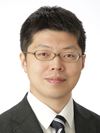 Microfluidics Research Core
Microfluidics Research Core
Assoc. Prof. Tadashi ISHIDA
I am Tadashi Ishida. I have been appointed as an associate professor at the Laboratory for Future Interdisciplinary Research of Science and Technology (FIRST), Institute for Innovative Research (IIR) from 1st of April, 2024. I received the Ph.D. degree in electrical engineering from the University of Tokyo in 2008. I was a postdoctoral fellow from 2008 to 2012 in Institute of Industrial Science, the University of Tokyo. I worked in Tokyo Institute of Technology as an assistant professor from 2012 to 2015 in the department of mechano-micro engineering, school of interdisciplinary graduate school of science and engineering, and an assistant professor from 2016 to 2017 and an associate professor from 2017 to 2023 in the department of mechanical engineering, school of engineering, respectively. I will plan to develop important microtools in the interdisciplinary field between mechanical engineering and medicine, and pave a new avenue using them.
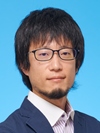 Advanced Manufacturing and Social Integration Research Core
Advanced Manufacturing and Social Integration Research Core
Assoc. Prof. Yu SEKIGUCHI
My name is Yu Sekiguchi and I have been appointed to the Laboratory for Future Interdisciplinary Research of Science and Technology (FIRST) as an Associate Professor on April 1, 2024. After receiving my degree from TokyoTech in the Ookayama campus in 2013, I was hired as an Assistant Professor at the Precision and Intelligence Laboratory, the predecessor of this research institute, and have been engaged in research related to adhesive bonding ever since. Adhesive bonding technology is often used in areas that must not be broken. Therefore, research has focused primarily on durability and reliability. On the other hand, debonding technology is also important, and I face contradictory issues every day. In the future, I would like to continue research on the phenomenon of things adhesion and debonding, but gradually branch out into different fields to expand the breadth of my research.
Sato-Sekiguchi Lab: https://www.adhesion.first.iir.titech.ac.jp
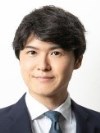 Advanced Manufacturing and Social Integration Research Core
Advanced Manufacturing and Social Integration Research Core
Assoc. Prof. Yuki HIRATA
I joined the Laboratory for Future Interdisciplinary Research of Science and Technology (FIRST) as an Associate Professor on April 1, 2024. I have been with Tokyo Tech since 2018, initially as an Assistant Professor in the Faculty of Engineering, Department of Mechanical Engineering, and since 2019, as an Assistant Professor in the Materials Processing Science Research Core of FIRST. My expertise lies in mechanical engineering, particularly in surface modification technology using functional thin films. I am involved in the development of synthesis techniques and analysis methods for nanomaterials such as Diamond-Like Carbon (DLC) films that protect machinery from wear and graphene, which exhibits interesting properties different from conventional materials. I will continue to dedicate myself to the research and development of carbon-based materials and the exploration of new industrial applications, striving to contribute to the advancement of our university and research institute. Thank you for your support.
Ohtake-Hirata Lab:https://sites.google.com/view/hirata-lab/home(Hirata Lab)
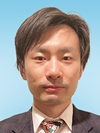 Advanced Materials Research Core
Advanced Materials Research Core
Assoc. Prof. Azusa OOI
I am Azusa Ooi, recently appointed as an Associate Professor at the Laboratory for Future Interdisciplinary Research of Science and Technology (FIRST) at the Institute of Innovative Research (IIR), starting April 1, 2024.
After earning my Ph.D. from the Tokyo Institute of Technology in March 2017, I served seven years as an assistant professor in the Eiji Tada Laboratory at the School of Materials Science and Engineering, affiliated with the same institution.
My primary research focus has been on uncovering the dissolution mechanisms of metal materials and the development of materials with enhanced durability based on these insights. To date, my efforts have been concentrated on devising methodologies for the detection of ultra-trace levels of metal dissolution and the application of these methods to fuel cell catalysts and steel materials.
Looking ahead, I am dedicated to the continued refinement of these techniques. Additionally, I plan to broaden the scope of my research to encompass a wider variety of materials, including biomaterials, aiming to contribute to the creation of high-durability materials in diverse fields.
I sincerely look forward to your support and guidance as I embark on this new phase of my academic career.
Ooi Lab:http://www.elechemcorr.mtl.titech.ac.jp
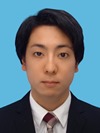 Advanced Materials Research Core
Advanced Materials Research Core
Asst. Prof. Naoki NOHIRA
My name is Naoki Nohira. I have recently been appointed as an Assistant Professor in the research group of Professors Hosoda and Tahara in the Advanced Materials Research Core of FIRST starting April 1, 2024. I received my Doctor of Engineering degree from Tokyo Tech in March 2022 and subsequently worked as a postdoctoral researcher and a specially appointed assistant professor in FIRST until March 2024. My current research primarily focuses on developing Titanium-based shape memory alloys for applications in biomedical fields and actuators. Building on my previous research, I aim to further advance the development of Titanium-based alloys from both the fundamental and applied perspectives. I would appreciate your continued support and encouragement.
Hosoda-Tahara Lab:http://www.mater.pi.titech.ac.jp/
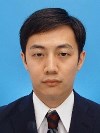 Advanced Materials Research Core
Advanced Materials Research Core
Asst. Prof. Ryutaro MATSUMURA
My name is Ryutaro Matsumura. I just have arrived as an assistant professor. After I received my Doctor of Engineering degree from Tokyo Tech in September of 2023, have been a postdoctoral researcher in FIRST until March of 2024. My recent research is study on kink microstructure and its strengthening mechanism in Mg-Zn-Y alloy. In my research, I’m working on geometrical analysis using continuity of deformation and microstructural observation using electron microscopy. Based on the theoretical analysis and experimental techniques I have developed so far, I would like to be involved in research on social implementation and diverse materials. I look forward to working with you.
Inamura Lab:http://www.mrst.first.iir.titech.ac.jp/inamura_tit/
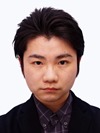 Quantum Nanoelectronics Research Center
Quantum Nanoelectronics Research Center
Asst. Prof. Wenbo LIN
I am Wenbo Lin, a newly appointed Assistant Professor at the Laboratory for Future Interdisciplinary Research in Science and Technology (FIRST), as of April 1, 2024. As information technology advances rapidly in modern society, there is an increasing demand for fast and secure information processing. Quantum technology is a promising candidate that has the potential to overcome the limitations of conventional information processing technology. A wide range of physical systems, from individual atoms to solid-state materials, and even light itself, are being considered for use in quantum technology. However, some of these systems still require large-scale setups and thus remain a challenge for their widespread use in society. We aim to take these quantum technologies beyond the realm of proof-of-principle and make them widely available to society by employing nanophotonics technologies, which are based on semiconductor nanofabrication technologies and therefore suitable for integration and mass production.
Nakagawa Lab:http://photonics.ee.e.titech.ac.jp/
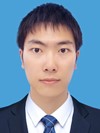 Urban Disaster Prevention Research Core
Urban Disaster Prevention Research Core
Asst. Prof. Yinli CHEN
I am Chen Yinli, who assumed the position of Assistant Professor on April 1st of 2024 at the Institute of Innovative Research, Tokyo Institute of Technology. I obtained my Ph.D. degree from Tokyo Tech in 2022, and subsequently served as an Assistant Professor at the Department of Architecture, Faculty of Engineering, Tokyo University of Science for two years. I am delighted to have the opportunity to return to Tokyo Tech as an Assistant Professor. My research topic is “Development of Control Strategies and Simple Design Methods for High-rise Active Base-isolation”. In recent years, the number of applications of base-isolated structures has increased rapidly, aiming to prevent damage to the superstructures of buildings and enable continuous use immediately after a major earthquake. Furthermore, numerous studies have reported that the combined use of base-isolation and active structural control (active base-isolation) can achieve higher control performance compared to the conventional passive base-isolation. However, there are still challenges of active base-isolation, such as devising control methods that achieve high control performance and developing design simple methods for estimating the maximum response of the control system. In the future, I intend to continue my research to address these challenges.
Sato Lab.:https://sites.google.com/site/daikisatotokyotech/
 Urban Disaster Prevention Research Core
Urban Disaster Prevention Research Core
Asst. Prof. YEOW, Trevor Zhiqing
I am Trevor Yeow, and I have been appointed as a Specially Appointed Assistant Professor at the Laboratory for Future Interdisciplinary Research of Science and Technology (FIRST)’s Urban Disaster Prevention Research Core as of 1st April 2024. I received my PhD in April 2017 from the University of Canterbury, New Zealand, and worked as a project researcher at The University of Tokyo’s Earthquake Research Institute from April 2018 to March 2024. My research focus is on improving the seismic design and analysis of reinforced concrete buildings, and the development of methods to evaluate building damage using structural health monitoring. Through my research, I hope to realize a society that is more resilient against future earthquakes. I look forward to working with everyone.
Kono Lab.:https://www.kono.first.iir.titech.ac.jp/
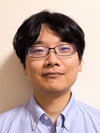 Digital Twin Unit
Digital Twin Unit
Asst. Prof. Hiroki ISHIKURA(Specially Appointed)
My name is Hiroki Ishikura. I joined the Institute of Future Industrial Technology at Tokyo Institute of Technology as a Specially Appointed Assistant Professor on April 1, 2024, and have continued in the same role at the Institute of Future Industrial Technology at Tokyo University of Science since October 1, 2024. My specialties are mathematical optimization and deep learning, with a focus on their industrial applications. Currently, my research is centered on developing smart factories through a joint research project with Rohto Pharmaceutical Co., Ltd. Additionally, the Fujisawa Laboratory, where I am affiliated, is engaged in numerous other joint research projects with various companies, and I am dedicated to creating technologies that can be utilized in the industrial sector through my daily research efforts. I kindly request your guidance and support in my future endeavors.
Fujisawa Lab: https://sites.google.com/view/fujisawa-lab-en/about-us/members/hiroki-ishikura/
 Microfluidics Research Core
Microfluidics Research Core Advanced Manufacturing and Social Integration Research Core
Advanced Manufacturing and Social Integration Research Core Advanced Manufacturing and Social Integration Research Core
Advanced Manufacturing and Social Integration Research Core Advanced Materials Research Core
Advanced Materials Research Core Advanced Materials Research Core
Advanced Materials Research Core Urban Disaster Prevention Research Core
Urban Disaster Prevention Research Core Urban Disaster Prevention Research Core
Urban Disaster Prevention Research Core Digital Twin Unit
Digital Twin Unit